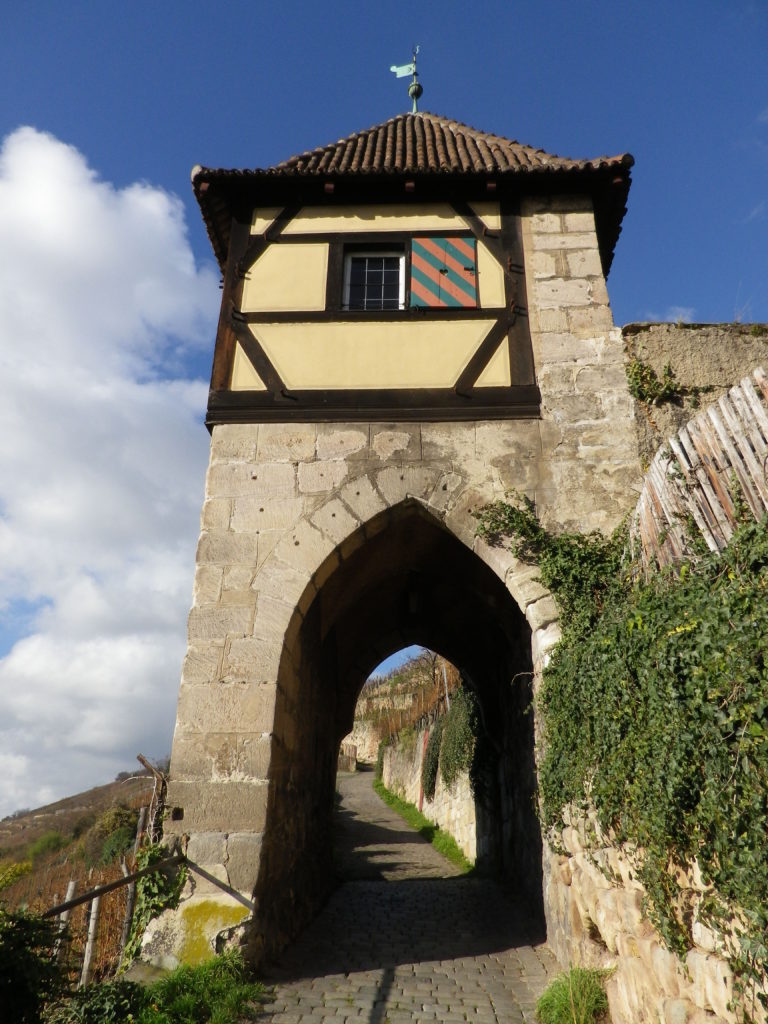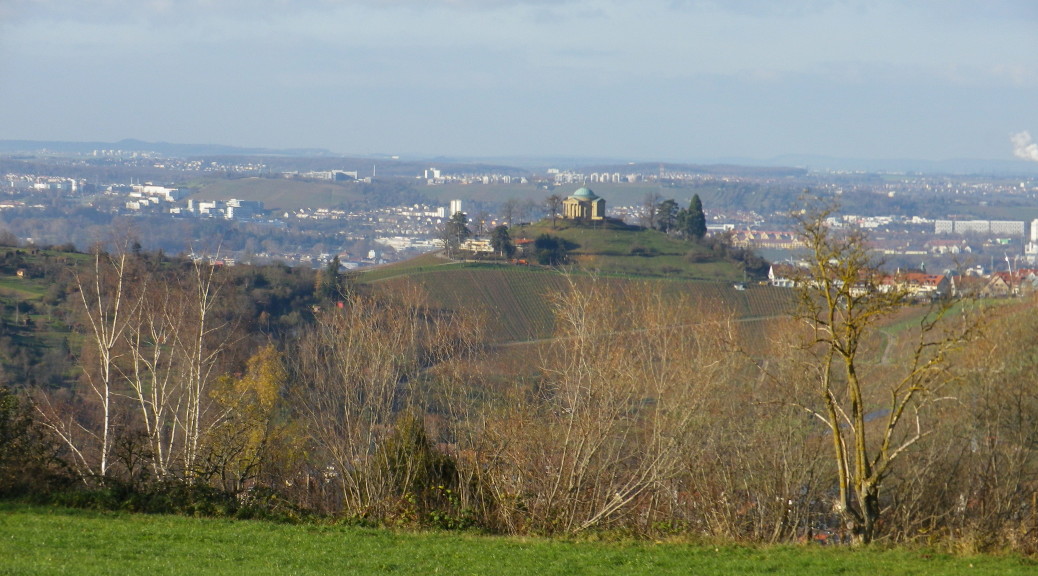Posts last month (here) detailed the first three stages of my hike through the southern-most portions of the Wuerttembergische Weinwanderweg (W4, for short), using only public transportation from Stuttgart. I ended the first half of my intended stages at the small town of Remshalden. This post (and the Nutshell) covers the remaining stages, passing through the wine growing area of Remstal, all the way to the historic city of Esslingen.
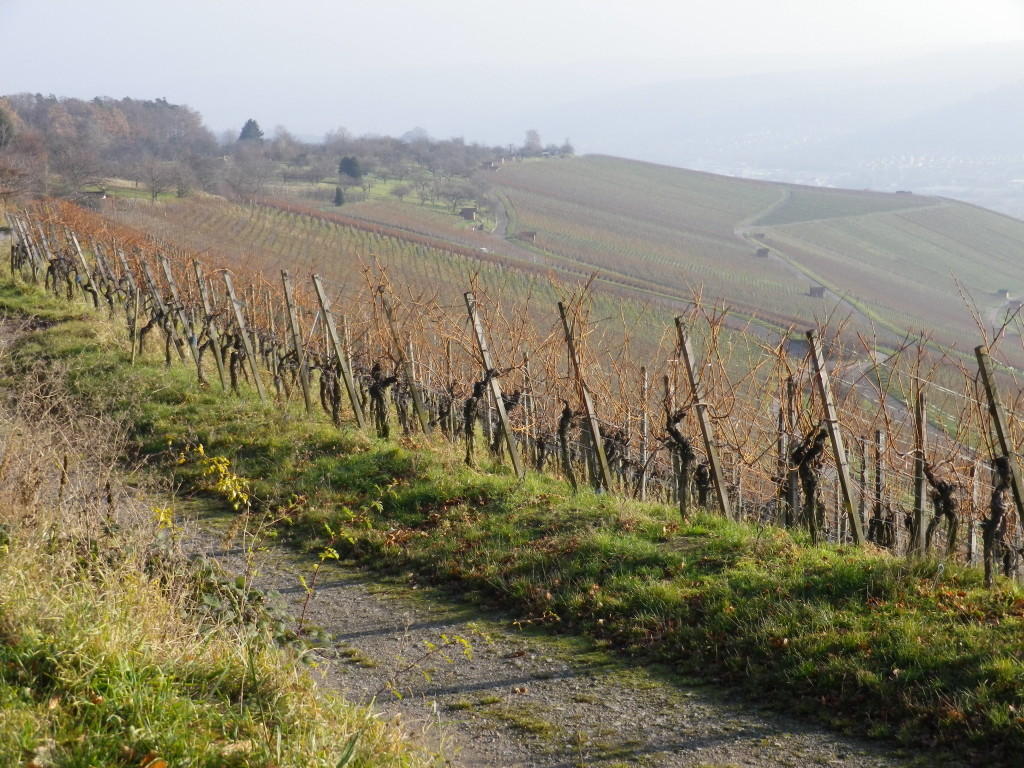
The fourth stage of my hike along this trail began in Remshalden, at Grunbach, on the banks of the Rems River. Remstal (“Rems Valley”) is both the name of the valley, and a wine growing area. Many of its small villages are devoted to wine-making. Not surprisingly, the trail in this segment leads through vineyards and some of these villages. One of the most memorable was Struempfelbach, a quiet Schwabian village set in a narrow valley lined with vineyards, seemingly far removed in both time and space from the ultra-busy metropolis of nearby Stuttgart. Cutting across the valley in less than 10 minutes, the trail leads over a ridge, and drops down into the slightly larger village of Stetten. Likewise, in a vine-filled valley, fog here so completely covered the ground that day that I couldn’t see more than six rows of vines away. Time to quit. Transportation-wise, this was the only other two-part return to downtown Stuttgart: a bus from Stetten, to the Fellbach train station, and from there the S-2 to Stuttgart’s center.
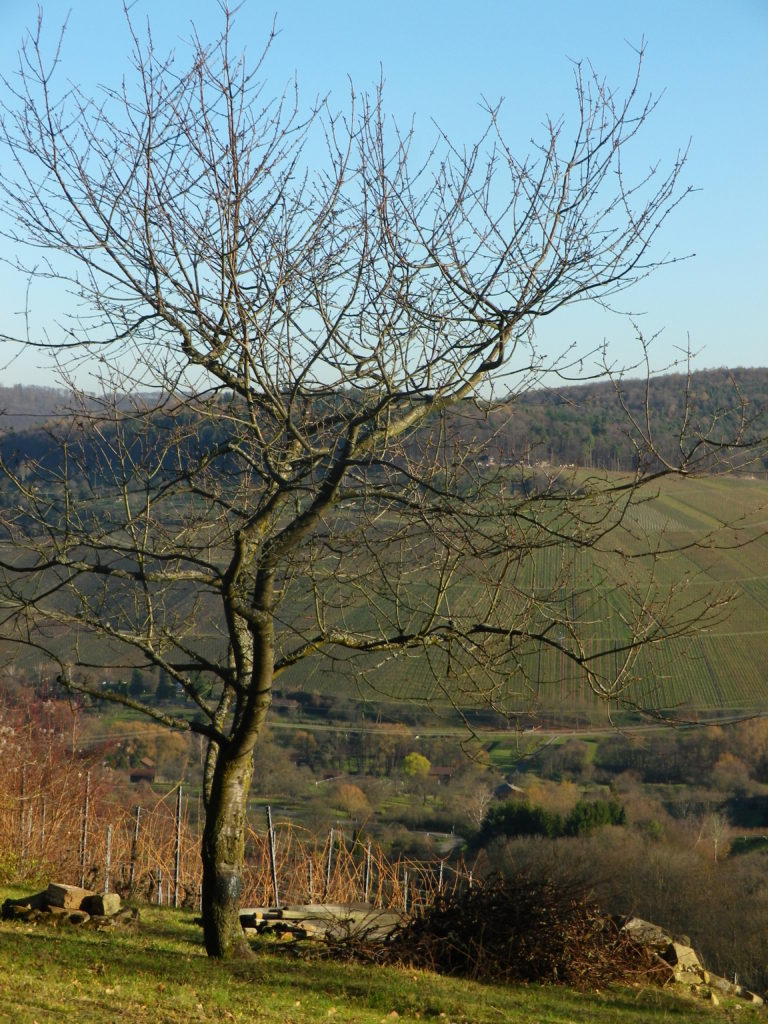
Finally, the last stage of the hike! It had a couple of steep uphill climbs, but the views were worth it. The first was through orchards and vineyards outside Stetten. From the top of the vineyards, I had a final view of the Remstal in the distance. From the Kernen Tower at the crest of the hill above Stetten, it is possible to see much of the area my hike covered: The Remstal and beyond, the Neckar River basin, and the distant ridgelines. Sadly, though, it was closed for repairs that day.
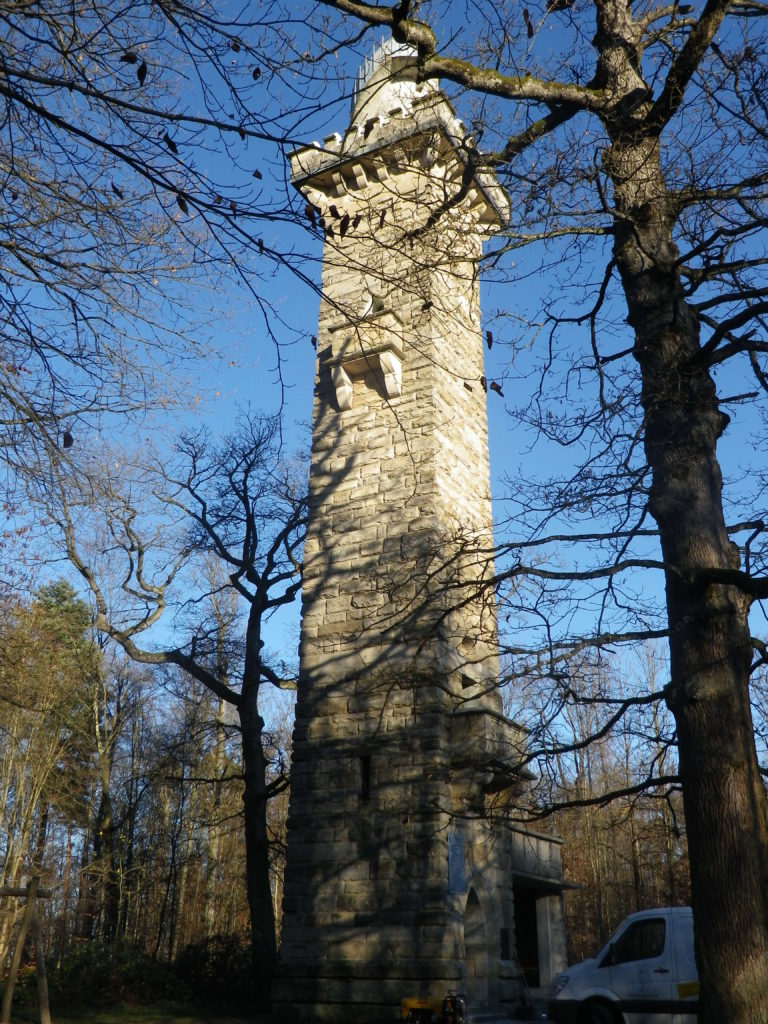
Once in Rotenberg, Stuttgart came into view. (Although the view from the Wuerttemberg Chapel/Mausoleum is nice, the view from the park above the village is even better, and a great spot for a picnic.) After the final push uphill from the village of Uhlbach to the wide fields of Katharinenlinde, the final downhill slope begins. The Neckar river comes into view again, and there is the promise of the charms of historic Esslingen, only a few kilometers ahead. The entrance into Esslingen is unforgettable: walking along old vineyards, above the Neckar, and then through an ancient gate in the walls that once surrounded this magnificent Imperial city.
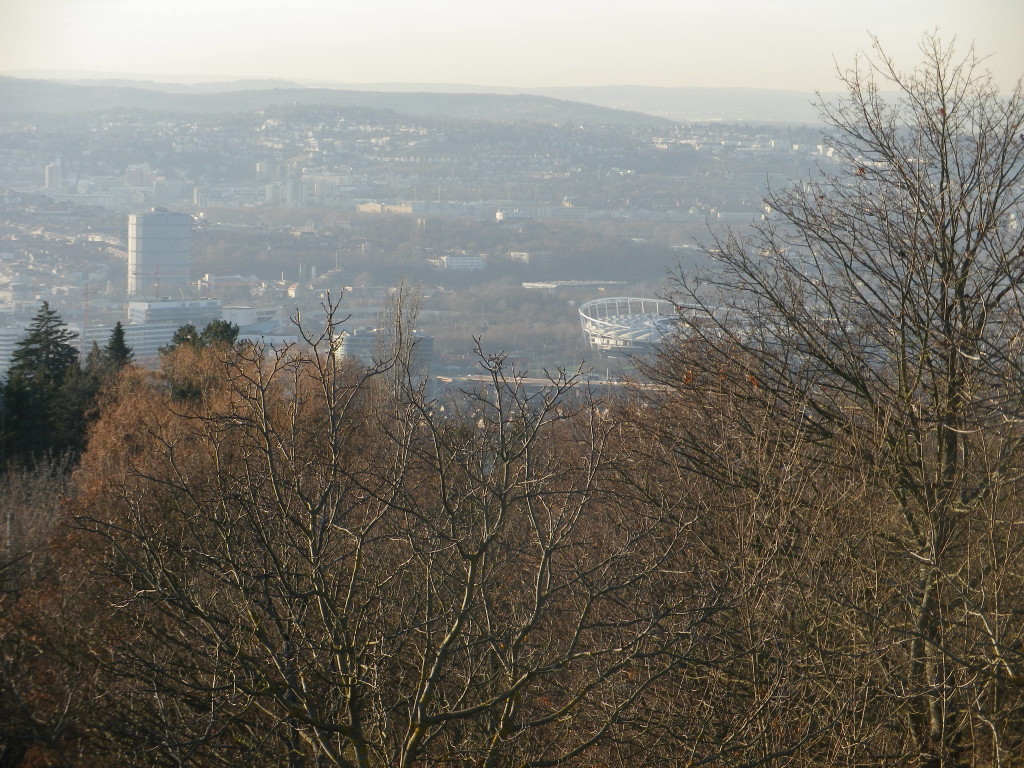
The S-1 connects Esslingen to downtown Stuttgart. It runs frequently, and can be crowded at times. But I was in no hurry. The city center with its large half-timbered houses and ancient churches grouped around enticing squares is worth exploring, as is the famous sparkling wine house of Kessler, one of Germany’s oldest sparkling wine (Sekt) producers. Both are within a couple of hundred meters or so of the end of the trail, and fitting ways to celebrate the end this unique hiking adventure by train!
